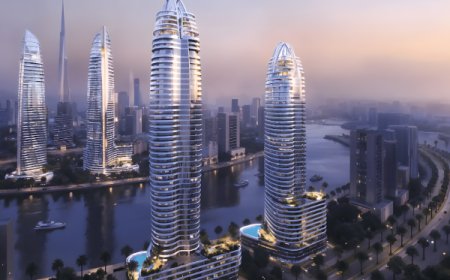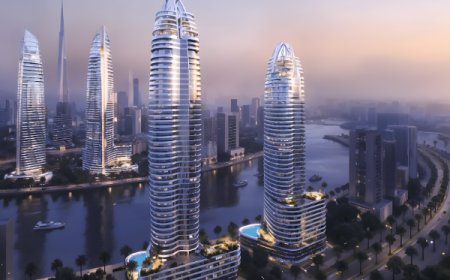How to Book a Speakeasy Tour in the Art Deco District
How to Book a Speakeasy Tour in the Art Deco District The Art Deco District, with its sleek lines, geometric motifs, and shimmering chrome accents, stands as a living museum of 1920s and 1930s design. But beyond the facades of pastel-colored buildings and neon-lit signage lies a hidden layer of history—hidden bars, clandestine entrances, and secret rooms that once served bootlegged gin during Proh
How to Book a Speakeasy Tour in the Art Deco District
The Art Deco District, with its sleek lines, geometric motifs, and shimmering chrome accents, stands as a living museum of 1920s and 1930s design. But beyond the facades of pastel-colored buildings and neon-lit signage lies a hidden layer of history—hidden bars, clandestine entrances, and secret rooms that once served bootlegged gin during Prohibition. Today, these spaces have been lovingly restored and transformed into immersive speakeasy experiences, offering visitors more than just cocktails—they offer a portal into a bygone era of jazz, rebellion, and intrigue.
Booking a speakeasy tour in the Art Deco District is not merely about reserving a time slot. It’s about curating an experience that blends architectural appreciation, historical storytelling, and sensory immersion. Whether you’re a history buff, a design enthusiast, or simply seeking an unforgettable night out, understanding how to navigate the booking process ensures you gain access to the most authentic, well-curated, and legally compliant tours available.
This guide provides a comprehensive, step-by-step roadmap to securing your spot on a speakeasy tour within the Art Deco District. You’ll learn not only the mechanics of booking but also the insider knowledge that separates a mediocre experience from an extraordinary one. From identifying legitimate operators to mastering the etiquette of hidden entrances, this tutorial equips you with everything you need to step behind the false bookshelf and into the heart of history.
Step-by-Step Guide
Research the Art Deco District’s Speakeasy Landscape
Before you book anything, take time to understand the geography and history of the district. The Art Deco District is not a single street—it’s a curated zone, often centered around areas like Miami Beach’s Ocean Drive, South Beach’s Collins Avenue, or parts of downtown Los Angeles and Cincinnati. Each location has its own cluster of preserved buildings, each with a unique story.
Start by identifying which buildings were originally constructed between 1920 and 1940 and were later repurposed into modern speakeasies. Look for landmarks with distinctive features: stepped facades, zigzag moldings, terrazzo floors, and brass inlays. These are often indicators that the building once housed a clandestine drinking establishment.
Use historical archives, local preservation societies, and digital maps to pinpoint locations. Websites like the Art Deco Society or Historic American Buildings Survey (HABS) offer detailed records of building usage during Prohibition. Cross-reference these with modern listings to find which current venues have authentic ties to the past.
Identify Reputable Tour Operators
Not all “speakeasy tours” are created equal. Some are themed cocktail crawls with no historical depth; others are meticulously researched experiences led by historians or former bartenders who’ve studied original menus and prohibition-era slang.
Look for operators who:
- Partner with local historical societies or museums
- Employ licensed guides with certifications in architectural history or cultural heritage
- Provide detailed itineraries outlining specific addresses, historical context, and access permissions
- Display testimonials with photos of actual tour stops (not stock images)
Avoid companies that use vague terms like “mystery bars” or “secret spots” without naming specific venues. Legitimate tours will name the buildings, their original owners, and the laws that once governed them. For example, a tour might explain how the “Coral Gables Grill” operated as a front for a rum-running operation in 1927, with documents to prove it.
Check Legal Compliance and Accessibility
Many former speakeasies are now private clubs or members-only lounges. A reputable tour operator will have formal agreements with venue owners to allow public access during scheduled hours. Always verify that the tour complies with local liquor licensing laws and that all stops are legally permitted for group visits.
Also, consider accessibility. Some historic buildings have narrow staircases, low doorframes, or uneven flooring. If you have mobility concerns, ask the operator in advance about physical requirements. Many now offer adaptive routes or virtual alternatives for parts of the tour.
Book Through Official Channels
Never book a speakeasy tour through third-party marketplaces like Groupon or Viator unless the listing explicitly states it’s an official partner. These platforms often aggregate low-quality experiences with minimal oversight.
Instead, go directly to the tour operator’s website. Look for:
- A secure booking system (https:// and a padlock icon)
- A clear cancellation and refund policy
- Transparent pricing with no hidden fees
- A calendar showing real-time availability
Most authentic tours have limited capacity—often 8 to 12 guests per group—to preserve the intimate, immersive atmosphere. Booking early is critical. Popular operators fill up weeks, sometimes months, in advance, especially during peak seasons like spring and fall.
Confirm Your Booking Details
Once you’ve made your reservation, you’ll receive a confirmation email. Do not skip this step. Verify:
- The exact date and time
- Meeting point address (often a nondescript storefront or alley entrance)
- What to wear (many tours require smart-casual attire—no shorts or flip-flops)
- What’s included (cocktails, snacks, historical pamphlets)
- Whether photography is allowed (some venues prohibit flash or tripods)
Some tours require a password or code to enter the first location. This is intentional—it mimics the original speakeasy experience. The password will be sent via email 24–48 hours before the tour. Do not share it publicly or with unauthorized individuals.
Prepare for the Experience
Arrive 10–15 minutes early. Punctuality is non-negotiable—many venues lock their doors after the start time for security and ambiance reasons.
Bring:
- A government-issued photo ID (age verification is required for alcohol service)
- A small notebook or journal (many guides encourage guests to record interesting facts)
- A light jacket (interior spaces are often cool, even in summer)
- A fully charged phone (for photos and navigation, but keep it on silent)
Dress appropriately. While you don’t need to wear a 1920s flapper dress, avoid casual wear. Think tailored trousers, a collared shirt, or a midi dress. Many venues enforce a dress code to maintain the historical aesthetic.
Follow the Guide’s Instructions
Speakeasy tours are interactive. Your guide will lead you through coded doorways, behind mirrors, or under floor panels. Do not deviate from the group. Do not attempt to open doors or touch decorative elements without permission.
Ask thoughtful questions. Guides are trained historians—they appreciate curiosity. Inquire about the origins of a particular mural, the type of gin served in 1929, or how patrons signaled the coast was clear.
Remember: this is not a bar crawl. It’s a historical journey. The cocktails are part of the narrative, not the main attraction.
Post-Tour Engagement
After the tour, you’ll likely receive a digital packet: a map of the stops, a bibliography of sources, and a list of recommended books or documentaries. Save this material—it’s invaluable for future research.
Leave a detailed review on Google, TripAdvisor, or the operator’s website. Highlight what made the experience unique: the depth of research, the authenticity of the setting, the guide’s storytelling. Your feedback helps preserve these spaces by encouraging continued investment in historical integrity.
Consider joining the operator’s newsletter or loyalty program. Many offer exclusive access to after-hours events, private tastings, or seasonal tours like “Moonlight Masquerade” or “Prohibition Night.”
Best Practices
Plan Around Seasonal Events
The Art Deco District hosts annual events that enhance the speakeasy experience. Look for:
- Art Deco Weekend (Miami Beach, January): Features guided tours, live jazz, and reenactments of 1920s parties.
- Prohibition Day (March): Commemorates the 18th Amendment’s ratification with themed cocktails and archival exhibits.
- Historic Preservation Month (May): Offers behind-the-scenes access to restored buildings not normally open to the public.
Booking a tour during these events can elevate your experience significantly. However, expect higher prices and limited availability. Plan at least three months ahead.
Respect the Architecture
These buildings are protected landmarks. Even minor damage—like a smudge on a brass handle or a scratch on a terrazzo floor—can require costly restoration. Never lean on walls, touch decorative metalwork, or use flash photography near fragile finishes.
Many operators provide gloves or lens filters for guests who wish to photograph details. Use them.
Engage with Local Culture
Speakeasy tours are not isolated experiences. They’re part of a broader cultural ecosystem. Before or after your tour, visit nearby museums, such as the Art Deco Museum in Miami or the Los Angeles Conservancy archives. Attend a live jazz performance at a historic theater. Dine at a restaurant that sources ingredients from 1920s-era suppliers.
This holistic approach deepens your understanding and transforms your visit from a single outing into a meaningful cultural immersion.
Support Ethical Tourism
Choose operators who reinvest profits into preservation. Some tours donate a portion of proceeds to restore original Art Deco signage, fund archival research, or train local youth in heritage conservation.
Ask: “How does your tour contribute to the preservation of this district?” A legitimate operator will have a clear, verifiable answer.
Practice Discretion
Even though these venues are now open to the public, many still value privacy. Avoid posting exact addresses or entrance codes on social media. Use vague descriptions: “A hidden bar behind a bookshelf in the heart of the district” instead of “The Velvet Lantern, 123 Ocean Drive.”
Respecting the mystique preserves the experience for future visitors.
Learn the Lingo
Understanding period-appropriate terminology enhances your experience. Familiarize yourself with terms like:
- Blind pig – an illegal drinking establishment
- Bootlegger – someone who smuggled alcohol
- Speakeasy – a place where alcohol was sold secretly
- Still – a device used to distill liquor
- Flapper – a young woman who defied 1920s norms
Knowing these terms allows you to engage more deeply with your guide and appreciate the nuances of the era.
Tools and Resources
Recommended Websites
- Art Deco Society – Global authority on Art Deco architecture, with searchable databases of historic buildings.
- National Park Service – Art Deco Resources – Official documentation, maps, and historical reports.
- Historic American Buildings Survey – High-resolution photos and blueprints of U.S. historic structures.
- Prohibition History Project – Archives of underground drinking culture, including menus and police reports.
Mobile Applications
- Art Deco Explorer – GPS-enabled app that overlays historic photos onto live street views. Shows you which buildings were once speakeasies.
- Historic Trails – Downloadable walking tours with audio narration. Includes a speakeasy route in Miami’s Art Deco District.
- Whisper – A guided audio app used by several tour operators. Provides context as you walk, with ambient jazz music and period sound effects.
Books for Deeper Understanding
- The Speakeasies of New York by Evelyn M. Davenport – A photographic history of hidden bars during Prohibition.
- Art Deco: A Guide to the Architecture of the 1920s and 1930s by Michael J. B. Allen – Technical breakdown of design elements and their cultural significance.
- Drinking in America: A History by Susan Cheever – Contextualizes the rise of speakeasies within broader American social change.
- Flappers and the Jazz Age by David W. Dunlap – Explores the intersection of fashion, music, and illicit nightlife.
Archival Access
If you’re conducting deeper research, contact local historical societies. Many offer:
- Access to digitized police logs from the 1920s
- Photographs of original bartenders and patrons
- Oral histories from descendants of Prohibition-era business owners
Some archives require an appointment; others offer virtual access. Always cite your sources if you plan to publish or share findings.
Real Examples
Example 1: The Velvet Lantern – Miami Beach
Located in a 1932 building on Ocean Drive, The Velvet Lantern was once the front for “The Blue Parrot,” a speakeasy owned by a former jazz trumpeter who smuggled Canadian rye in hollowed-out saxophone cases.
A tour operator called Hidden Histories Miami offers a 90-minute guided experience that includes:
- Entry through a bookshelf that slides open via a hidden lever
- A tasting of a reconstructed 1928 “Gin Rickey” using period-appropriate botanicals
- A viewing of original ledger pages from the bar’s hidden cash register
- A live performance of a 1927 jazz standard on a restored player piano
Booking is done exclusively through their website. Tours are capped at 10 guests. The operator partners with the Miami Beach Preservation League and donates 15% of proceeds to restore the building’s original neon sign.
Example 2: The Silver Door – Los Angeles
Hidden behind a laundry shop on 7th Street, The Silver Door operated as a clandestine gin joint during Prohibition, frequented by silent film stars. Today, it’s part of a curated tour by Deco Nights LA.
Their tour includes:
- A walk through the original alleyway where bootleggers dropped crates
- Access to a secret basement where moonshine was distilled
- A cocktail made with a 1923 recipe found in a recovered bartender’s journal
- A Q&A with a historian who restored the building’s original terrazzo floor
Guests receive a printed “Speakeasy Passport” stamped at each stop, which can be redeemed for a discount at partner museums.
Example 3: The Velvet Vault – Cincinnati
One of the few speakeasy tours in the Midwest, this experience is led by a former archivist from the University of Cincinnati. The tour visits three buildings: a former bank vault turned bar, a church basement that hosted illegal gatherings, and a converted pharmacy that sold “medicinal whiskey.”
What sets this tour apart is its academic rigor. Each guest receives a packet of primary documents, including a 1925 police raid report and a handwritten receipt for a “tonic” purchased for $3.50.
Booking requires a brief application explaining your interest in Prohibition history. This ensures participants are genuinely curious, not just seeking Instagram backdrops.
FAQs
Can I book a private speakeasy tour?
Yes, many operators offer private tours for groups of 6–12 people. These often include custom itineraries, themed cocktails, or historical reenactments. Prices vary based on group size and customization. Contact the operator directly for private booking options.
Are children allowed on speakeasy tours?
Most tours are restricted to guests aged 21 and over due to alcohol service. However, some operators offer “Prohibition Day” family versions during daylight hours that focus on architecture and history without alcohol. Always confirm age policies before booking.
Do I need to know anything about Art Deco before the tour?
No prior knowledge is required. Guides are trained to explain design elements in accessible terms. However, reading one of the recommended books beforehand will deepen your appreciation.
What if I’m late to the tour?
Most venues lock their entrances precisely at the start time for security and ambiance. Late arrivals cannot be accommodated. If you’re running late, contact the operator immediately—they may be able to reschedule you for a later slot, depending on availability.
Are these tours wheelchair accessible?
Some historic buildings have physical limitations due to their age. However, many operators now offer modified routes, virtual access to restricted areas, or companion tours. Always inquire about accessibility options when booking.
Can I take photos during the tour?
Photography is usually permitted, but flash and tripods are often prohibited to protect delicate finishes and maintain the immersive atmosphere. Some venues allow photos only in designated areas. Always follow your guide’s instructions.
How long do these tours typically last?
Most tours run between 90 and 120 minutes. This includes walking time between locations, cocktail tastings, and historical narration. Longer tours (3–4 hours) may include dinner or live entertainment.
Is tipping expected?
Tipping is not required but appreciated. Many guides are independent historians who rely on tips to supplement their income. A 15–20% gratuity is standard if the experience exceeded expectations.
What if I don’t drink alcohol?
Non-alcoholic options are always available. Many operators craft period-appropriate mocktails using ingredients like ginger beer, hibiscus syrup, and herbal infusions. Inform the operator at booking so they can prepare accordingly.
Are these tours available year-round?
Most operate seasonally, with peak availability from March to November. Some offer limited winter tours, especially during holiday events. Always check the operator’s calendar before planning.
Conclusion
Booking a speakeasy tour in the Art Deco District is more than a tourist activity—it’s a pilgrimage into a world where design, defiance, and daring converged. These tours are not about drinking; they’re about understanding how architecture became a vessel for resistance, how beauty thrived under repression, and how communities preserved their culture in the shadows.
By following the steps outlined in this guide—from researching reputable operators to respecting the sanctity of historic spaces—you ensure that your experience is not only memorable but meaningful. You become part of a larger effort to preserve these stories, not just as relics, but as living lessons in resilience and creativity.
The hidden doors of the Art Deco District still stand. The passwords still exist. The jazz still plays, faintly, in the walls. All you need to do is find the right way in—and know how to walk through it with care, curiosity, and reverence.
Book wisely. Travel respectfully. And when you step behind that bookshelf, remember: you’re not just visiting history. You’re honoring it.





































